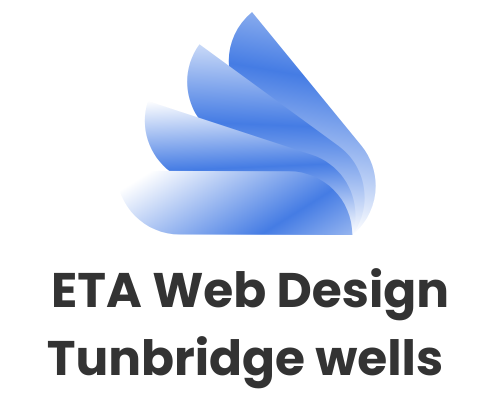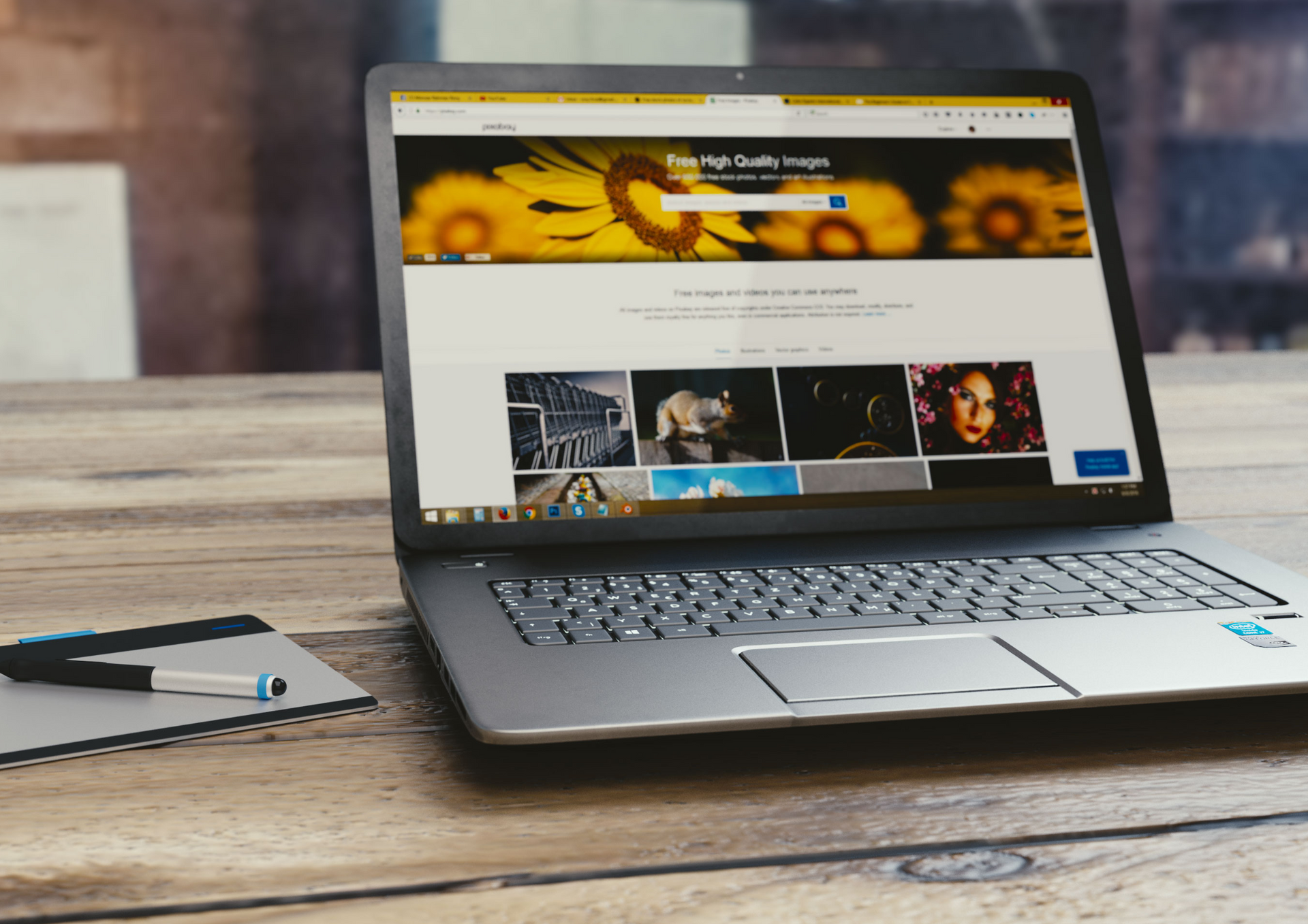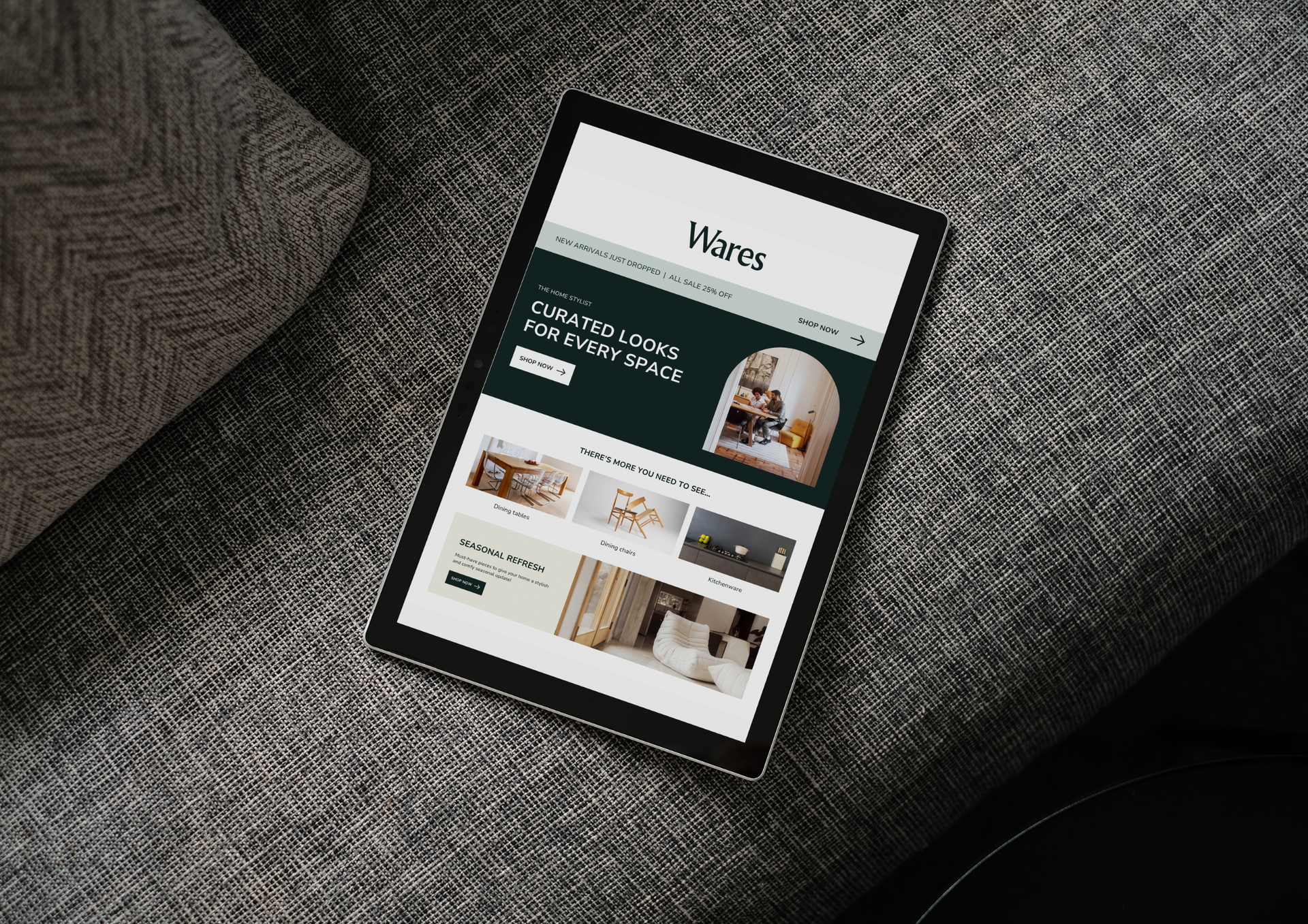Creating a website that performs well, converts visitors, and reflects your brand’s identity is more than just a design exercise—it’s a strategic process. User Experience (UX) and User Interface (UI) are two of the most critical elements in any website build, shaping how people interact with your brand online and influencing whether they stay or leave.
For homeware brands, health and wellness businesses, and retailers, a well-designed website is no longer optional—it’s essential for visibility, trust, and growth.
This article explores how UX and UI design contribute to a successful site.
Understanding the Difference Between UX and UI
Before you begin making a website, it’s vital to understand how UX (User Experience) and UI (User Interface) work together. Though they share similar goals, each plays a unique role in shaping how users interact with your site.
Key Differences Between UX and UI:
- UX (User Experience):
- Focuses on how users feel when navigating your site.
- Covers structure, navigation flow, accessibility, and ease of use.
- Ensures users find what they need quickly, leading to higher satisfaction and conversions.
- UI (User Interface):
- Concentrates on the visual and interactive design elements.
- Includes colours, typography, icons, and overall aesthetics.
- Reinforces your brand identity while guiding users intuitively through the site.
How They Work Together:
- When UX and UI complement one another, they create a seamless experience that blends functionality with visual appeal.
- A strong partnership between the two ensures your web build performs smoothly across all devices and leaves a memorable impression on visitors.
The Impact of UX and UI on Business Performance
Strong UX and UI design directly affect your business outcomes. In today’s competitive market, first impressions matter more than ever. Studies consistently show that users decide whether to stay or leave a website within seconds. Poor navigation, cluttered layouts, or slow load times can immediately turn potential customers away.
A good UX strategy ensures the website is easy to use and optimised for conversions. This means thoughtful placement of calls-to-action, clear hierarchy in content, and minimal friction from landing page to checkout. For example, a homeware brand might highlight its best-selling collections on the homepage with smooth, image-led navigation, while a wellness business may focus on booking simplicity or readability.
On the UI side, consistent branding elements—such as a well-chosen colour palette and elegant typography—enhance brand recall and trust. These details help communicate professionalism, quality, and care, particularly important for retail and health-oriented businesses where visual appeal influences purchasing decisions. When both UX and UI are prioritised during the
website build, they elevate your credibility and foster long-term customer relationships.
User-Centred Design: Creating with Purpose
At the heart of effective design lies the principle of user-centred thinking. Rather than creating a site purely from a company’s perspective, successful designers build around user needs, expectations, and behaviours.
Professional web designers achieve this by conducting audience research, analysing user journeys, and developing detailed wireframes that anticipate real-world interactions. The result is a design tailored to how visitors actually think, browse, and buy.
For instance, retail businesses often benefit from an interface that showcases products through clear imagery and filtering options. Health and wellness brands, meanwhile, may require a calming, trust-building aesthetic that encourages users to book appointments or explore informative content without distraction.
User-centred design ensures every element serves a purpose—from button placement to the wording of navigation labels. By aligning structure and functionality with audience intent, your website becomes an asset that both informs and converts.
Accessibility and Mobile Responsiveness
A truly successful website is one that everyone can use, regardless of device or ability. Accessibility isn’t just a legal requirement—it’s a reflection of inclusivity and professionalism.
Good UX and UI design ensure your website performs seamlessly across mobile, tablet, and desktop devices. This is especially crucial for businesses that rely on on-the-go customers, such as retail stores and service-based brands. Responsive layouts, clear font choices, and adaptable components all contribute to a smooth browsing experience.
Accessibility also extends to considerations such as colour contrast, keyboard navigation, and alt text for images. These details improve usability for all visitors, including those with visual or motor impairments, and enhance SEO performance.
When accessibility and mobile optimisation are integrated into your website build, you not only meet compliance standards but also show your brand’s commitment to quality and inclusivity.
The Psychology of Visual Design and Trust
The aesthetics of your site play a major role in how users perceive your brand. Human beings make quick judgments based on visual cues, so your design must communicate trust, stability, and professionalism from the outset.
Colour psychology, for example, can strongly influence mood and perception. A health and wellness business might use calming tones like soft blues or greens to evoke tranquillity, while a homeware retailer could benefit from warm neutrals that suggest comfort and familiarity. The placement of visual elements also guides attention—directing users to important areas such as calls-to-action or promotional sections.
For those who choose to build your own website, it’s worth noting that design psychology is both an art and a science. Without proper experience, it’s easy to overlook the subtleties that affect user confidence, such as spacing, readability, and visual balance. That’s why professional input from an experienced agency can make all the difference between a good site and a great one.
How the Best Tools Support UX and UI
Technology continues to reshape design possibilities. Today, some of the best website builders come with UX-focused templates and responsive design options, allowing small businesses to launch faster. However, while these tools simplify the process, they rarely replace the expertise of a skilled designer who understands brand identity, SEO, and human psychology.
Professionals customize beyond templates, ensuring your website doesn’t look generic or struggle to scale as your business grows. Whether it’s a complex e-commerce setup or a lead-generation site, having a strategic partner ensures that technical precision aligns with visual excellence.
By integrating both automation tools and creative expertise, a professional agency can create a future-proof design that evolves with your business and delivers measurable results.
The Importance of Continuous Improvement
Launching your website is only the beginning. To maintain strong performance and user satisfaction, ongoing refinement is essential. Continuous improvement in UX and UI ensures your website evolves with changing trends, customer needs, and business goals.
Key Steps for Continuous Improvement:
- Monitor performance regularly: Use analytics tools to track visitor behaviour, identify high-traffic pages, and understand where users drop off.
- Test and refine: Conduct A/B tests on layouts, calls-to-action, and navigation elements to enhance usability and engagement.
- Update content frequently: Refresh copy, imagery, and features to reflect seasonal trends, product launches, or business updates.
- Gather user feedback: Encourage visitors to share their experiences to uncover pain points and opportunities for enhancement.
- Ensure long-term alignment: Regularly assess whether your website continues to meet evolving user expectations and brand objectives.
At
ETA Web Design Tunbridge Wells, we specialise in building websites that balance visual beauty with performance precision. Our design process combines UX research, UI excellence, and SEO-friendly development to create sites that engage visitors and convert leads.
We collaborate closely with every client to understand their goals, target market, and brand personality. Whether you’re a growing retailer, a wellness studio, or a homeware brand seeking digital transformation, our team ensures your website reflects your values and drives measurable results.
New update on X: The role of UX and UI design in building a successful
website build!





